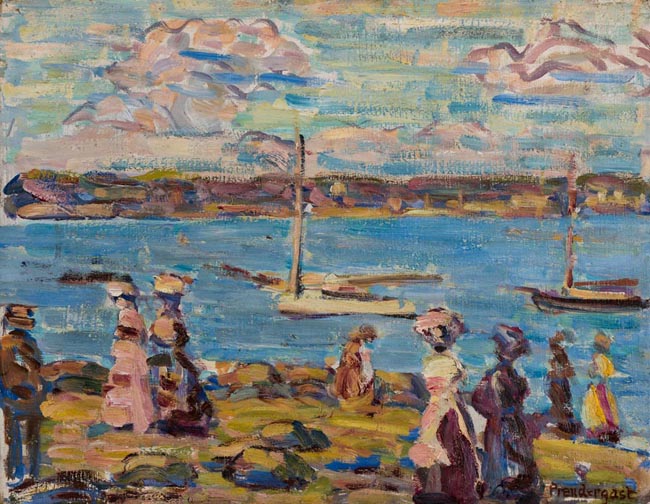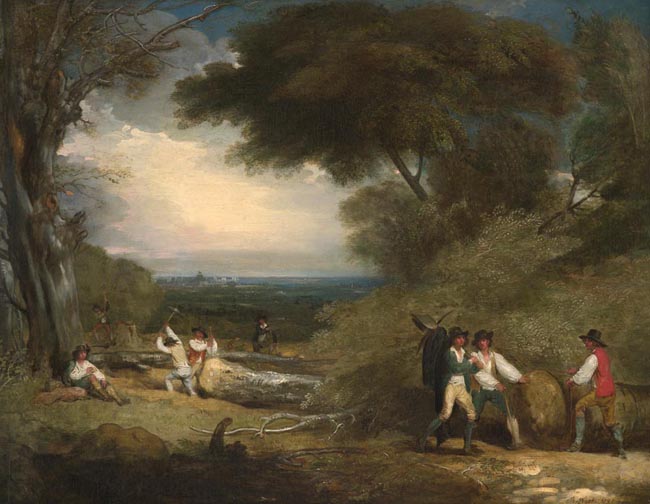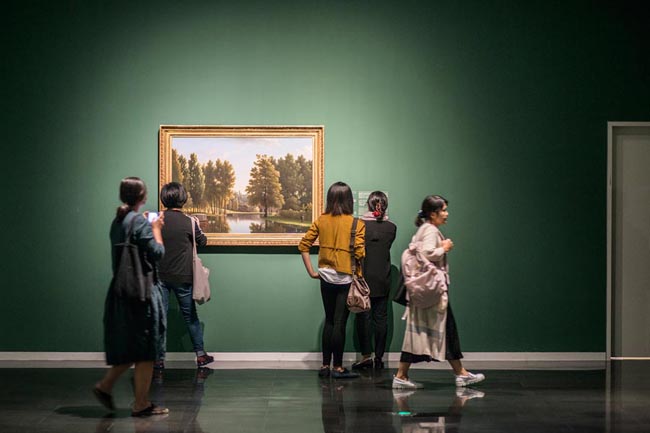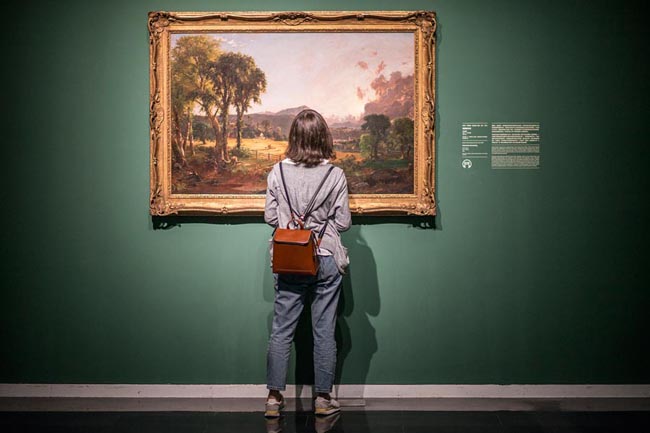Author: Lin QiSource: China DailyPublished on: 2019-03-12

Gloucester, a painting by American painter Maurice Brazil Prendergast, is on show at an exhibition named Americans Abroad at the Tsinghua University Art Museum in Beijing.
American painters who studied in Europe in the 19th century drew on the continent's cultural traditions to create an artistic landscape unique to the US, Lin Qi reports.
The art world has rapidly become globalized since the turn of the 21st century, and international artistic exchanges are increasing exponentially, thanks largely to modern transportation methods and the growth of digital technology.
One can hardly imagine how many difficulties artists living centuries ago faced when it came to developing new techniques and styles, when the spread of information was slow and limited in scope.
Americans Abroad, an ongoing exhibition at the Tsinghua University Art Museum running through Sunday, introduces to audiences the thirst for learning prevalent among 19th-century painters in the then burgeoning new country of the United States-and how they traveled across the ocean to study and learn from their European predecessors.

Woodcutters in Windsor Park, a painting by American artist Benjamin West, is also on show there.
The exhibition has on display some 50 landscapes primarily from the collection of the Sidney and Lois Eskenazi Museum of Art at Indiana University, as well as other works on loan from the Indiana University Campus Art Collection, the Terra Foundation for American Art and the Indianapolis Museum of Art at Newfields.
According to Jennifer McComas, the exhibition curator and the Eskenazi Museum of Art's curator of European and American art, few Americans traveled abroad in the early 19th century, and most studied European art through prints since there were no art museums as such, only art schools. This began to change after the American Civil War with the introduction of steamers, which helped to transport more people from the US to Europe for travel and study.
The exhibition reviews the influence that the artist's mentors in Britain, the Netherlands, Germany, France and Italy had on US painters, and the particular effect they had on their depictions of natural landscape. These exchanges helped the artists shape their individual feelings toward the expansive views of the North American continent and develop a distinctive style of grand narration.

Visitors stop to look at a painting at the exhibition, which shows 50 landscapes and reviews the influence European masters had on US painters.
"Their landscapes are a fusion of natural beauty and pastoral sentiments," says Xu Hong, a chief curator at the Tsinghua University Art Museum.
For those American painters who managed to reach Europe, the most prestigious museums, with their rich collections-from the Louvre in Paris to the Prado Museum in Madrid-became the classrooms where they immersed themselves in the works of European masters.
They attended art colleges in France and Germany, forming communities of migrant American painters and shared their groundbreaking styles and views on painting.
Importantly, they learned from great European artists not to follow rigid rules about depicting what they saw, but instead learned to listen to their hearts with sensitivity and care to capture the movements of nature-the sun, the sky, the drifting clouds and the rising mist.
Xu says the acceptance of a romanticist tendency to add divinity to natural scenes is evident in the works of the US painters on display at the Beijing show.
"The style probably evoked among them the excitement they felt when thinking about the imposing yet desolate landscapes of their home continent.
"The feelings made them reflect on the vulnerability and loneliness of humans in the universe, a sentiment that people today can empathize with."

A visitor looks at a painting at the exhibition, which shows 50 landscapes and reviews the influence European masters had on US painters.
Yet, the migrant American painters did not simply transplant these European landscapes into their works. They added a US perspective to better cater to their audience and buyers back home.
They addressed social issues such as the damage to the Native American culture brought about by colonization. George Winter, a painter who was born in England and emigrated to Indiana, created in his painting on show, Indians on the Eel River, a poetic river view that depicts several Native Americans trapped by a flood on an isolated outcrop, which reveals the painter's sympathy for the land's indigenous people.
McComas says while some US painters enjoyed the vibrant artistic environment in Europe so much that they decided to stay there, most returned home to sow the seeds of their art, passing on their experience of Europe to future generations.
Xu says the foundations of American painting were built over time through the work of these artists who introduced the cultural traditions of the European continent to the US. It helped them to create an artistic landscape unique to North America and presented new styles, which future US artists eventually developed into works that rivaled those of their European teachers.
